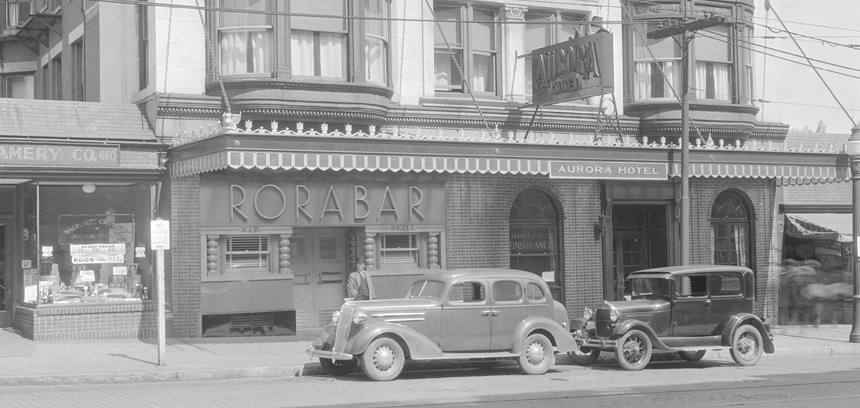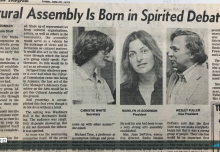As we prepare for our move to the Printers Building, we look back on the history of the building that ArtsWorcester has called its home for the past twenty years: The Aurora. Explore the building’s life before ArtsWorcester in Part One of Looking Back at the Aurora.

The Aurora’s Beginnings
In the nineteenth century, Worcester established itself as one of the busiest centers of activity in the Northeast. Increased industry, immigration, and advances in transportation revolutionized Worcester. Newcomers flocked to the city. Though many hotels and boarding houses could be found throughout Worcester, visitors began to expect luxury accommodations that matched Worcester’s reputation as a leader in industry, political action, and entertainment. The simple tavern lodging houses left over from the Revolutionary period no longer satisfied visitors’ tastes. Extravagant hotels like the Aurora, on the other hand, attracted these newcomers. Built in 1897 by architects Barker & Nourse, the Aurora Hotel was a luxury residential hotel that has now maintained its status as an iconic Worcester landmark for over a century.
When the Aurora opened it featured 79 luxurious rooms as well as two function halls. The Aurora also included a restaurant and the popular Rora Bar. Dancing, jazz music, and fine dining were all staples at the hotel, which called itself ‘Worcester’s newest and most beautiful night spot.’ Famous local guitarist Pete Clemente often wowed crowds at the Aurora. The hotel became a hub of social activity because dancing and live music took place at the Aurora nearly every night of the week.
In addition to the Aurora’s nightly events, the building itself met high expectations regarding architecture and design. Though the Aurora is nestled on busy Main Street today, at the time of construction the area was still on the very rural edge of downtown and populated by apple orchards. Similar buildings created around this time typically had three floors. The Aurora impressed at six floors. The building underwent interior renovations in 1929 and 1940, thrusting it fully into the modern age. Visitors lauded the hotel for its luxurious materials including art deco lighting and expensive marble. The exterior shows influences of both the neoclassical and Art Moderne architectural movements. White marble and molded stonework cover the front of the building, the rest of which is made of brick.
Later Years at the Aurora
Worcester saw a decline in industrialization in the second half of the twentieth century. Businesses outsourced to other countries or moved out of the city. At the same time, the glamor of the Aurora began to dim. The hotel slowly fell into disrepair and by 1979 inspectors declared that 59 of the hotel’s rooms suffered from damaged ceilings and walls. The City of Worcester fought with the building’s owners over health and safety codes until March of 1982, when the hotel officially closed. In October of the same year the city took ownership of the property due to unpaid taxes. The building was unoccupied, run-down, and in poor condition. These were rough years for the once dazzling hotel.
In the following years, multiple groups began to express interest in buying the building and submitted plans to the city government. The city could not decide between the buyers, so they put out a call for interested parties to submit plans for the building’s rehabilitation. In 1985 the city put the property up for auction and Greater Boston Community Development, Inc. bought it on the condition that the building’s primary function would be housing. Preservation Worcester, then known as the Worcester Heritage Preservation Society, helped to place the Aurora on the National Register of Historical Places in 1988. The building’s historical reputation and importance were officially established.
To be continued next week!
This post is part of a series written and researched by Alice Dillon, ArtsWorcester Program Staff.
Above image: The Aurora Hotel, pictured here in 1939, currently houses our main galleries and offices.
Image courtesy of the Worcester Historical Museum.




